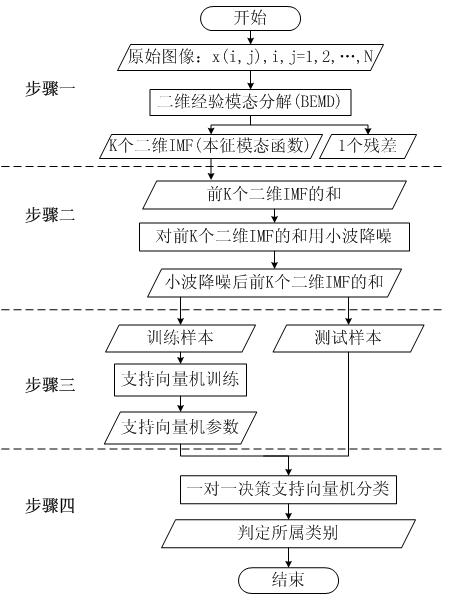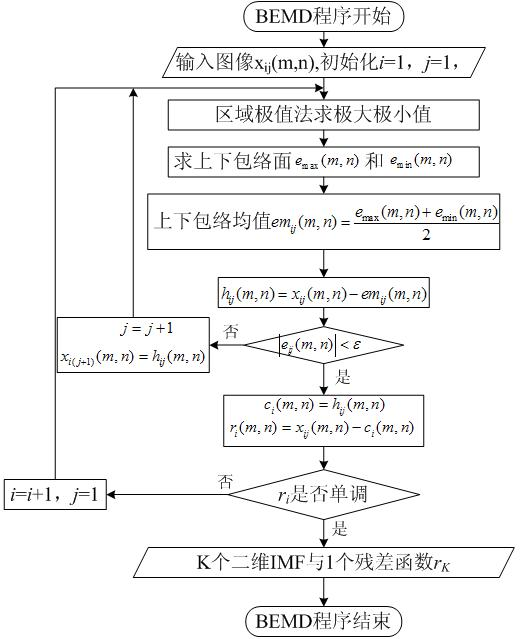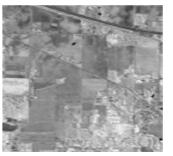Multi-group image classification method based on two-dimensional empirical modal decomposition and wavelet denoising
A technique of empirical mode decomposition and wavelet noise reduction, applied in the field of image processing, can solve the problems of low classification accuracy and insufficient utilization of image essential features, and achieve the effect of removing noise interference, facilitating popularization and application, and achieving good consistency.
- Summary
- Abstract
- Description
- Claims
- Application Information
AI Technical Summary
Problems solved by technology
Method used
Image
Examples
specific Embodiment approach 1
[0016] Specific implementation mode one: the following combination figure 1 and figure 2 To describe this embodiment,
[0017] In 1998, Dr. Huang E of NASA (National Aeronautics and Space Administration, NASA) proposed Hilbert-Huang Transform (HHT) according to the mathematical theory design of modern mathematician Hilbert. As a powerful tool for analyzing nonlinear and non-stationary signals, HHT is divided into two steps. First use Empirical Mode Decomposition (EMD) to obtain a limited number of Intrinsic Mode Functions (IMF), and then use Hilbert Transform (HilbertTransform, HT) and instantaneous frequency method to obtain the instantaneous frequency and amplitude of IMF, Finally, the time-spectrum of the signal is obtained.
[0018] The core of HHT is EMD. EMD is completely driven by data, and its essence is to screen the signal according to the characteristic time scale of the signal. This process is represented by a scale band-pass filter to filter the signal, so th...
specific Embodiment approach 2
[0073] Specific implementation mode two: the following combination Figure 3 to Figure 14 This embodiment is described, and a specific example is given, using multi-group images of 92AV3C hyperspectral images.
[0074] Hyperspectral images are typical multi-group images. The selected 92AV3C hyperspectral image comes from the remote sensing observation of an agricultural area in northwestern Indiana, USA collected by the AVIRIS (Airborne Visible / Infrared Imaging Spectrometer) sensor. The image set contains 224 continuous waves, from 0.40 μm to 2.45 μm approximately every 10nm band. Remove 4 zero-value bands and 20 bands affected by water vapor absorption, and there are 200 bands available for actual experiments. The ground objects with the largest number of 7 types of pixels (ie corn-notill, corn-mintill, grass / trees, soybeans-notill, soybean-mintill, soybean-cleantill and woods) were selected as experimental samples. The total number of pixels of these 7 types of ground obje...
PUM
 Login to View More
Login to View More Abstract
Description
Claims
Application Information
 Login to View More
Login to View More - R&D
- Intellectual Property
- Life Sciences
- Materials
- Tech Scout
- Unparalleled Data Quality
- Higher Quality Content
- 60% Fewer Hallucinations
Browse by: Latest US Patents, China's latest patents, Technical Efficacy Thesaurus, Application Domain, Technology Topic, Popular Technical Reports.
© 2025 PatSnap. All rights reserved.Legal|Privacy policy|Modern Slavery Act Transparency Statement|Sitemap|About US| Contact US: help@patsnap.com



